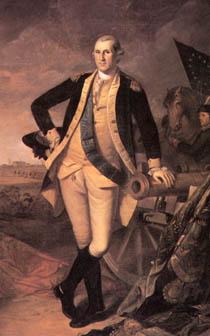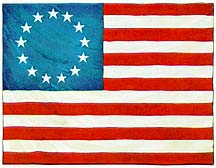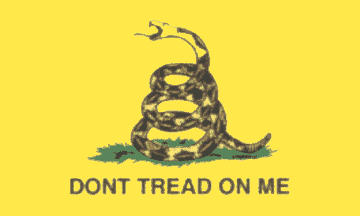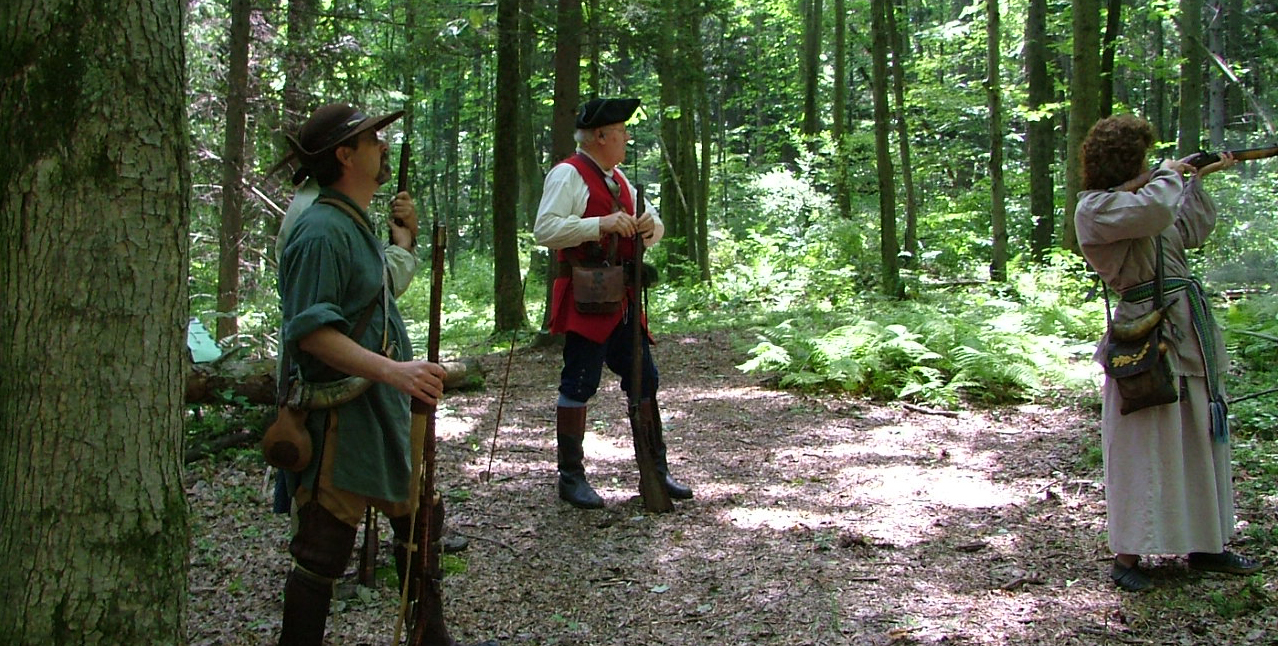

 | ||||


Welcome to the home of John Proctor's Independent Battalion Westmoreland County Pennsylvania. The first American Troops & battle flag West of the Allegheny Mountains.
The reorganization of Old Westmoreland Rifles occurred on January 31, 1947 at the hall of Western Pennsylvania Historical Society in Pittsburgh, PA. They held monthly meetings and were comprised of men that were interested in collecting and shooting muzzle loading firearms. The name engenders from Westmoreland County which in history is known as Old Westmoreland. In 1775 it comprised of present day Westmoreland, Washington, Fayette, Green, Beaver, Indiana, Allegheny and parts of Butler and Armstrong Counties.
This is were the white man could look over the rivers of the Allegheny, Ohio and Kistakominitis. North and West of these rivers was the Indian country, and the only deterrent the savage red man knew was the Westmoreland County Border men, with his cursedly fatal Pennsylvania Long Rifle and his Long Knife after which he is named by the Indians, “Shemanese” meaning Long Knives.
Before the news of the battle of Lexington, April 19, 1776 had reached Westmoreland County, the settlers of this western border gathered at the courthouse in Hannastown which was the county seat, six miles North of present day Greensburg. This meeting occurred on May 16, 1775. These Frontiersmen of the borderland framed that day the famous Westmoreland Resolves, a copy of which was sent to the Committee of Safety in Philadelphia. These Resolves stated the inhabitants of Westmoreland relief measures for the people besieged in Boston, Massachusetts, they would raise money and supplies to defend their homes and state. They were unanimous in proclaiming that freedom from Great Britain should be a primary act of the people, and that they would form themselves into a body of armed and disciplined troops to defend the Western border of the Colony. One year later on July 4, 1776 in Philadelphia the Declaration of Independence was framed, incorporating all the resolves that were proclaimed more than a year before on the western border in Hannastown. The initial body of troops raised in Pennsylvania West of the Allegheny Mountains was from among those men who met at Hannastown in the summer of 1775. Three Battalions of Riflemen were first formed under the command of John Proctor who was the Sheriff of Westmoreland County at the time, he was given the rank of Colonel. They served under various officers both in Washington’s Army in the East and against the Indians on the Western frontier borders from 1775 until 1781, and later until 1795. These men marched under their own battle flag made by the sister of Captain Craig, a resident of near the present day New Alexandria. The original flag was in the archives of the state of Pennsylvania at Harrisburg but is now housed at the Fort Pitt Museum. This flag predates the Stars and Stripes by two years, is here described in replica: A British red ensign bearing the cross of St. George and St. Andrew in the upper left corner has on its crimson field the following letters: JP IBWCP. These stand for “ John Proctors Independent Battalion of Westmoreland County Provincials.” The coiled rattlesnake and the ringing words “ Don’t Tread On Me.” The symbolism being, anyone who treads on the rattlesnakes that reside in Westmoreland County does so at his own peril.
We are proud to commemorate the spirit of these men and women, each time we gather to shoot or camp, the battle flag of the first American troops West of the Allegheny Mountains flies high above us. Some of the names to which we and this Country owe great thanks are, Gen. St. Clair, Col. Wm. Crawford, Col. George Rogers Clark, Capt. Wm. Linn, Simon Kenton, Capt. Sam Brady, Betty Zane, Mad Ann Bailey, Lewis Wetzel, David Duncan, Daniel Boone, Gen. Anthony Wayne and hundreds like them, with a spirit that could not be crushed. Our Nation stands today because of the courage and determination, of thousands of frontier men and women, who gave all for a new life, and to found a new Nation.
We are proud to be their heirs, and humbled in the shadow of their accomplishments. Remembrance is the greatest respect and honor we can give them !!!
Huzzah , Huzzah , Huzzah !!!
About Us: History
 | ||||
 | ||||
 | ||||








Hanna's Town Resolves:
"Resolved unanimously, That the Parliament of Great Britain, by several late acts, have declared the inhabitants of Massachusetts Bay to be in Rebellion, and the ministry, by endeavoring to enforce those acts, have attempted to reduce the said inhabitants to a more wretched state of slavery than ever before existed in any state or country. Not content with violating their constitutional and chartered privileges, they would strip them of the rights of humanity, exposing lives to the wanton and unpunishable sport of licentious soldiery, and depriving them of the very means of subsistence."
"Resolved unanimously, That there is no reason to doubt that the same system of tyranny and oppression will (should it meet with success in Massachusetts Bay) be extended to every other part of America: It is therefore become the indispensable duty of every American, of every man who has any public virtue or love for his country, or any bowels for posterity, by every means which God has put in his power, to resist and oppose the execution of it; that for us we will be ready to oppose it with our lives and fortunes. And the better to enable us to accomplish it, we will immediately form ourselves into a military body, to consist of companies to be made up out of the several townships under the following association, which is declared to be the Association of Westmoreland County."
"Possessed with the most unshaken loyalty and fidelity to His Majesty, King George the Third, whom we acknowledge to be our lawful and rightful King, and who we wish may long be the beloved sovereign of a free and happy people throughout the whole British Empire; we declare to the world, that we do not mean by this Association to deviate from that loyalty which we hold in our bounded duty to observe, but, animated with the love of liberty, it is no less our duty to maintain and defend our just rights (which, with sorrow, we have seen of late wantonly violated in many instances by a wicked Ministry and a corrupted Parliament) and transmit them to our posterity, for purpose which we do agree and associate together:"
"1st. To arm and form ourselves into a regiment or regiments, and choose officers to command us in such proportions as shall be thought necessary."
"2nd. We will, with alacrity, endeavor to make ourselves masters of the manual exercise, and such evolutions as may be necessary to enable us to act in a body with concert; and to that end we will meet at such times and places as shall be appointed either for the companies or the regiment, by the officers commanding each when chosen."
"3rd. That should our country be invaded by a foreign enemy, or should troops be sent from Great Britain to enforce the late arbitrary acts of its Parliament, we will cheerfully submit to military discipline, and to the utmost of our power resist and oppose them, or either of them, and will coincide with any plan that may be formed for the defense of America in general, or Pennsylvania in particular."
"4th. That we do not wish or desire any innovations, but only that things may be restored to, and go on in the same way as before the era of the Stamp Act, when Boston grew great, and America was happy. As a proof of this disposition, we will quietly submit to the laws by which we have been accustomed to be governed before that period, and will, in our general or associate capacities, be ready when called on to assist the civil magistrate in carrying the same in execution.''
"5th. That when the British Parliament shall have repealed their late obnoxious statutes, and shall recede from their claim to tax us, and make laws for us in every instance; or when some general plan of union and reconciliation has been formed and accepted by America, this our Association shall be dissolved; but till then it shall remain in full force; and to the observation of it,
we bind ourselves by everything dear and sacred amongst men." "No licensed murder: no famine introduced by law?
"Resolved that on Wednesday, the twenty-fourth instant, the township meets to accede to the said Association and choose their officer."
Adopted at a general meeting of the inhabitants of the County of Westmoreland, held at Hanna's Town the 16th day of May, 1775 for taking into consideration the very alarming situation of the country, occasioned by the dispute with Great Britain.
Historic Hanna's Town:
The First County Seat West of the Allegheny's Hanna's Town, an 18th century, town named for Robert Hanna. was the first County Seat in Pennsylvania west of the Allegheny's. The legislative act which created Westmoreland County. stated that "until such times as a court house be built, the courts are to be held at the house of Robert Hanna." Westmoreland County at that time included all of southwestern Pennsylvania. Robert Hanna, who came from York County, Pennsylvania, served as a justice for Bedford County in 1771 and 1772. When Westmoreland County was formed out of Bedford. he was again named a justice. Robert Hanna laid out lots upon his tract of land and planned a county town. Each owner was instructed to erect a house eighteen feet square within two years of purchase. Unfortunately, all the deeds were not recorded and there is no accurate description of the town in existence.
A serious boundary dispute caused bitter feelings between Pennsylvania and Virginia during 1774 and 1775. Conflicts arose between Virginia constables and Pennsylvania officials at Hanna's Town and these confrontations nearly resulted in a border war. A permanent boundary, was finally agreed upon, April 1, 1784. Max, 16, 1775 was also an important date at Hanna's Town. A gathering was held to discuss England's violation of the rights of the American colonists. The "Hanna's Town Resolves", written at this meeting, stated that the people of Westmoreland, though loyal to King George III, would resist the tyrannical acts of the British Parliament. There is no copy of the Resolves to show the signatures on the original document or to point to its author. However, General Arthur St. Clair did have a hand in drawing up the Resolves. In a letter to a friend, St. Clair wrote, "I got a clause added to it by which they bind themselves to assist civil magistrates in the execution of the laws they have been accustomed to be governed by.
During the Revolutionary War, times were difficult at Hanna's Town. Many left their homes to fight for independence; those who did not were engaged in the protection of the frontiers. There were numerous Indian incursions causing forts and strongholds to be built for the safety of the inhabitants. A stockade had been erected at Hanna's Town during the troubled times of 1774, and another during the Revolutionary War period. This stockade protected the people and the surrounding countryside during the attack of 1782.
Hanna's Town was sacked and burned on Saturday, July 13, 1782 at approximately 2:00 PM. A large raiding party, consisting of Seneca Indians accompanied by some officers of the British Indian Department, came down from Fort Niagara. Fortunately for the inhabitants, a reaping party spotted the enemy and gave warning and those present fled into the fort. One fatality was a young girl named Peggy Shaw. She, as tradition has it, saw a child in danger and ran to rescue him. In so doing, she was wounded and died two weeks later. The raiding party went to Miller's Station about three miles south of Hanna's Town. There they tomahawked five people. Mrs. Robert Hanna and her eldest daughter, Jane, along with some others were taken prisoner to Montreal, Canada and not released until after the 1783 treaty of peace was signed.
Archaeological investigations at Hanna's Town began in the fall of 1969 to determine the locations of the structures if possible and to recover the artifacts which early settlers left behind them. To date, more than one million artifacts have been recovered from the site and the locations of approximately twelve areas of occupation determined. The exact site of one of Hanna's Town forts was located. Thus far, Robert Hanna's house, the one room jail, and the stockade fort have been reconstructed. Hanna's Town is open for guided tours. Greeting you at the door of the log building that served as home, tavern and courthouse will be a hostess or guide in colonial garb. Guides are well versed on the history and archaeology of the site.
RATTLESNAKE FLAG
of
COLONEL JOHN PROCTOR'S 1st BATTALION
WESTMORELAND COUNTY, PENNSYLVANIA
American Revolution
Tradition holds that the flag was made in 1775 at Hanna's Town from a pre-existing British standard. The flag measures seventy-six inches by seventy inches. The field of the flag is red silk. The canton in the upper right hand corner consists of individual pieces of red, white and blue silk and forms two crosses. The red on white represents the English cross of St. George; the white on blue the Scottish cross of St. Andrew. The retention of the British symbol on the flag indicates that the inhabitants of Westmoreland County, although ready to resist the tyrannical acts of the British Parliament, still considered themselves loyal subjects of King George III.
In the center of the field is a rattlesnake coiled to strike. The snake' s thirteen rattles signify the American colonies. The rattlesnake device is painted directly on the silk, as is the lettering and decorative scrollwork. The painting was obviously done by a skilled artisan. The gold banner is lettered in black, "DON'T. TREAD. UPON. ME."; the first two letters of the word UPON have flaked away over the years. Unlike the rattlesnake on other early flags, the snake on the Proctor flag faces right toward the symbol of the British empire. Above the snake is the monogram of John Proctor and the letters, "I. B. W. C. P.", 1st Battalion, Westmoreland County, Pennsylvania or Provincials.
This flag was carried at the battles of Trenton and Princeton, and throughout the rest of the war. The flag was not flown from a pole. The staff was inserted through the sleeve on the canton side of the flag and carried by the color bearer of the battalion.
Samuel Craig, Sr., who with his three sons, John, Alexander and Samuel, Jr. served in the Revolution, was the original color bearer. The Proctor Battalion did not fight in the Revolution as an organization and it is not known if this flag was ever carried in battle. On Colonel Proctor's death, ca. 1810, the flag was sent to General Alexander Craig, the son of Samuel Craig, Sr. The flag remained in the Craig family until 1914 when Jane Maria Craig of New Alexandria, Pennsylvania, the great-granddaughter of Samuel Craig, Sr., donated the flag to the State Library at Harrisburg, Pennsylvania. Later, it was transferred to the William Penn Memorial Museum.
It was designated the official flag of Westmoreland County in 1973, the county's bicentennial year.

